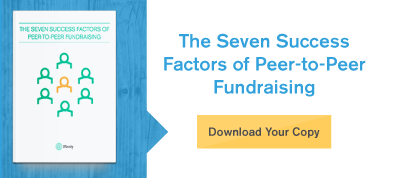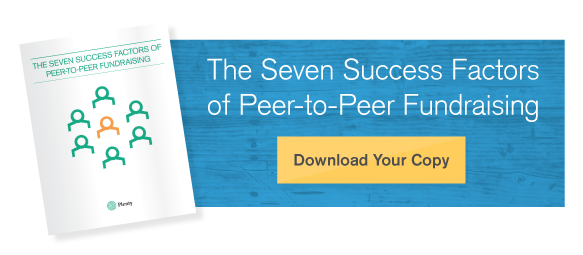Your Fundraising Strategy: Seeing The Forest For The Trees
When I moved into my small Chicago apartment last year, I realized there was no room for a dining room table, which was unfortunate because I had a table in need of a home. Soon after this realization, other moving woes popped-up that required my attention and I quickly forgot about the issue, plus, there was an island in the kitchen with a bar and stools – which was the perfect small space solution to my problem.
The move ended, I got settled into my new apartment, and I didn’t think about the dining room table again. Or at least that was the case, until about six months ago. Over the past few months, I slowly started to realize that, while a bowl of cereal for breakfast was just fine to eat at the island, I greatly disliked eating dinner there. For me, dinner is a time to connect with whomever you’re sharing it with – be that friends or family – and debrief from the day, and those cabinet-facing bar stools next to the sink just didn’t inspire that end of the day connection I was looking for. Even though I physically had the essentials covered (a flat surface to put a bowl on, a place to sit, a seat for each person), I had still failed to achieve my ultimate goal – the creation of an ambience for connection and community over a shared meal.
 This phenomenon – of having all the right pieces, but not necessarily the whole – is all too common in environments much larger than my kitchen, including the world of fundraising. It’s easy to start with a goal for a particular campaign or event, create a list of requirements for achieving that goal, check off tasks on the list upon implementation, and then still feel as though something isn’t working or fitting together correctly. Or worse, it takes even longer to realize that something is a bit off as you try to convince yourself that your strategy is working just fine (e.g. “These bar stools are great! I’m so glad we were able to find a space – and cost-efficient solution for this!”). But how efficient is that solution when it doesn’t actually accomplish what you want it to?
This phenomenon – of having all the right pieces, but not necessarily the whole – is all too common in environments much larger than my kitchen, including the world of fundraising. It’s easy to start with a goal for a particular campaign or event, create a list of requirements for achieving that goal, check off tasks on the list upon implementation, and then still feel as though something isn’t working or fitting together correctly. Or worse, it takes even longer to realize that something is a bit off as you try to convince yourself that your strategy is working just fine (e.g. “These bar stools are great! I’m so glad we were able to find a space – and cost-efficient solution for this!”). But how efficient is that solution when it doesn’t actually accomplish what you want it to?
When focusing on a specific aspect of a campaign or event, it’s easy to get lost in the weeds of that particular variable, whether it’s increasing participation, expanding fundraising efforts, or improving internal operations, and eventually allow your focus to unintentionally drive the entire strategy. At the same time, with so many moving pieces, it’s also easy to handle each at surface level and not fully evaluate how they impact the bigger picture.
To prevent this drift from happening in the first place, be sure to stay rooted in your mission when crafting campaigns, engage and mobilize the right audience that is already focused on your cause, and understand what drives your constituents to participate in your events and fundraise. When you start to feel that something is out of place or, better yet, are conducting a routine check to assure that all pieces of your fundraising strategy are fitting together correctly, consider the following questions as a guideline for your reflection.
1. Is this strategy aligned with your organization’s mission?
This may seem like a silly question at first, but in an effort to drive participant and donor numbers, it’s not uncommon for the mission to fall by the wayside for a particular campaign or strategy. Whether your event is trying to stand out amidst its many peers or you are simply trying to reach a new audience, be sure to stay true to yourself as an organization and let your mission drive those branding and recruitment strategies.
2. How does this strategy impact your organization’s bottom line?
For most organizations, the bottom line is crucial for furthering mission. Whether that includes research, education, or awareness, donation revenue plays a critical part in accomplishing the work that your mission commands. Ensure that your fundraising strategy is impacting the key variables that drive donation revenue.
Perhaps first, what are your key metrics for measuring the success of your strategy? Key metrics allow you to quantitatively benchmark, track, and analyze how your campaigns and events perform over time and can provide insight on how they impact the larger organizational efforts. Start by taking a look at how the strategy has performed over time, then take a deeper dive into your donation data to understand the range and median of your donations. Review these metrics on a regular basis to understand trends over time and to become familiar enough with your data to know when something doesn’t look right.
Ultimately, evaluating your approach and recalibrating your priorities as needed is absolutely critical. Focus on examining the key elements of your strategy, their orientation and scale within the strategy, and performance over time. Whether it’s at the end of each day, week, or month, take a moment to confirm how your plan for growth aligns with your mission, impacts the bottom line, and has performed over time.
Even though it took a year of experimenting with different eating arrangements and a longer than intended trip to IKEA last weekend, I finally bought a drop leaf cafe table and I can’t believe the difference that it has already made. While a new strategy is the only practical solution in some cases, in others, a reorganization and reprioritization of the existing pieces is the better path to take. The important thing is to take the time to evaluate, troubleshoot, and analyze, then realign when necessary to ensure that your nonprofit is able to make the difference that you’ve set out to make.
Build a strong strategy and create more impact. Download our free e-book "The Seven Success Factors" for a deep look at the seven components driving your fundraising program's success and how you can improve and fuel each one.
Share this
You May Also Like
These Related Stories

Harnessing Data In Peer-to-Peer: Success Factor #6

What Construction Can Teach You About Measuring Impact




No Comments Yet
Let us know what you think